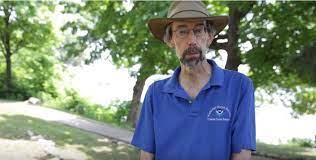

Antonio Mannino Ph.D., NASA-GSFC
GLIMR Deputy Principal Investigator
Antonio.Mannino@nasa.gov
As DPI, Antonio advises on instrument technical issues, contributes to defining science and instrument requirements, and works to accomplish GLIMR’s science objectives by supporting data products algorithm development and participating in the validation field campaigns. As a sea-going oceanographer, he has served as chief scientist on multiple oceanographic cruises working in all major oceans with the exception of the Indian Ocean. His current research applies field observations, satellite data, and 3D coupled models to study carbon cycle processes and phytoplankton community composition across seascapes from rivers to oceans.

GLIMR Co-Investigator
Steve.Ackleson@nrl.navy.mil

David Antoine, Curtin University
GLIMR Collaborator / Science Advisory Group
David.Antoine@curtin.edu.au

Chuanmin Hu, USF
GLIMR Co-Investigator
huc@usf.edu
Chuanmin's expertise is in the development of remote sensing algorithms and data products as well as application of these data products to address earth science questions. In the GLIMR team he will provide advice on sensor specifications and develop GLIMR-targeted algorithms to map oil spills and macroalgae blooms.

Wonkook Kim, Pusan University
GLIMR Collaborator / Science Advisory Group
wonk19@gmail.com

Richard Stumpf, NOAA
GLIMR Co-Investigator
richard.stumpf@noaa.gov

Michelle (Shelly) Tomlinson, NOAA
GLIMR NOAA NOS Liaison / Co-Investigator
michelle.tomlinson@noaa.gov
Shelly serves as a NOAA representative and works closely with the GLIMR science team to provide advice on agency needs for satellite data, in particular as they relate to the National Ocean Service and NOAA’s Ecological Forecasting efforts for Harmful Algal Blooms (HABs) and the NOAA CoastWatch program. The GLIMR satellite mission would provide much needed spatial, spectral and temporal resolution for monitoring and managing coastal ocean processes.

Maria Tzortziou, CCNY
GLIMR Applications POC / Co-Investigator mtzortziou@ccny.cuny.edu
Maria is the Applied Science Lead for the GLIMR mission, and Science Team member leading the development, refinement, and evaluation of GLIMR satellite algorithms and data products relevant to CDOM absorption, spectral slope, and DOC concentration in nearshore waters. Her research focuses on the biogeochemistry and ecology of aquatic ecosystems –from rivers to oceans– and explores human-ecosystem interactions across temporal and spatial scales.

Stephanie Schollaert Uz, NASA-GSFC
GLIMR NASA Applied Sciences Collaborator
stephanie.uz@nasa.gov
Stephanie's research focuses on the response of marine and aquatic ecosystems to physical forcing through the use of satellite data, in situ measurements, model output and statistical reconstructions. She is the Principal Investigator on a new project exploring ways to apply remote sensing to identify water quality issues for aquaculture in the Chesapeake Bay.

Doug Vandemark, UNH
GLIMR Co-Investigator
doug.vandemark@unh.edu
Doug's team will utilize daily time-evolving GLIMR imagery to observe fine-scale surface fronts, to better understand vertical velocities in the upper ocean. Doug's research interests address air-sea interaction processes with a focus on ocean remote sensing of wind waves and the air-sea exchange of momentum, heat, and mass including greenhouse gases.

Ryan Vandermeulen, NOAA NMFS
GLIMR Collaborator
ryan.vandermeulen@noaa.gov
Ryan is responsible for biophysical algorithm development, data product validation, assessment of instrument performance modeling and verification of product uncertainties, as well as the formulation of strategic tools to advance instrument scheduling and Concept of Operations. Beyond his technical roles, Ryan also strives to promote and develop materials that ignite the interest of a broader public audience in the science of our natural world

Toby Westberry, OSU
GLIMR Co-Investigator
westbert@science.oregonstate.edu







